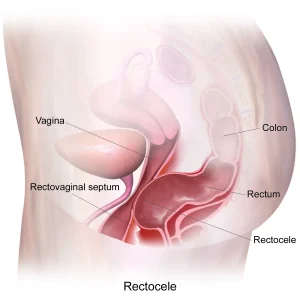Rectocele Treatment
Rectocele is the prolapse of the anterior wall of the rectum towards the vagina. This condition is generally seen in women and is rarely observed in men. In some patients, rectocele occurs in relation to weakness of the pelvic floor muscles. In such cases, uterine or vaginal prolapse, rectal prolapse, fecal and urinary incontinence may also be present.
The most common causes of rectocele are weakening of the pelvic floor muscles and thinning of the rectovaginal septum. There are several risk factors for rectocele in women, including multiple vaginal deliveries, difficult childbirths, episiotomy procedures, and a history of constipation. Additionally, hysterectomy increases the risk of developing rectocele. This condition is frequently seen in elderly individuals, but can rarely occur in younger women and those who have never given birth.

TREATMENTS

